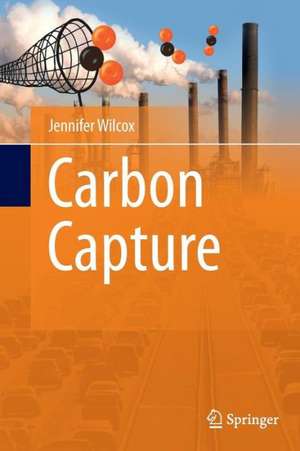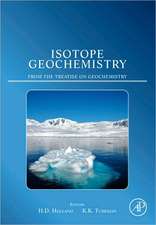Carbon Capture
Autor Jennifer Wilcoxen Limba Engleză Paperback – 16 apr 2014
| Toate formatele și edițiile | Preț | Express |
|---|---|---|
| Paperback (1) | 457.03 lei 6-8 săpt. | |
| Springer – 16 apr 2014 | 457.03 lei 6-8 săpt. | |
| Hardback (1) | 591.79 lei 6-8 săpt. | |
| Springer – 28 mar 2012 | 591.79 lei 6-8 săpt. |
Preț: 457.03 lei
Nou
Puncte Express: 686
Preț estimativ în valută:
87.46€ • 94.97$ • 73.47£
87.46€ • 94.97$ • 73.47£
Carte tipărită la comandă
Livrare economică 22 aprilie-06 mai
Preluare comenzi: 021 569.72.76
Specificații
ISBN-13: 9781493901258
ISBN-10: 1493901257
Pagini: 348
Ilustrații: XXIV, 324 p.
Dimensiuni: 155 x 235 x 18 mm
Greutate: 0.48 kg
Ediția:2012
Editura: Springer
Colecția Springer
Locul publicării:New York, NY, United States
ISBN-10: 1493901257
Pagini: 348
Ilustrații: XXIV, 324 p.
Dimensiuni: 155 x 235 x 18 mm
Greutate: 0.48 kg
Ediția:2012
Editura: Springer
Colecția Springer
Locul publicării:New York, NY, United States
Public țintă
GraduateCuprins
Power Systems (PCC, IGCC, NGCC, Oxycombustion).-Capture Systems (Postcombustion, precombustion, direct air capture).- CO2 Chemistry (carbonate vs. carbomate); thermodynamics; kinetics.- Mass Transfer (gas and liquid diffusion).- Material Science - solvent properties; packing materials (absorption) - sorbent properties (MOFs, Resins, activated carbon; adsorption).- Process Design (absorption towers; adsorption systems - packed-bed vs fluidized-bed reactors) - catalytic membranes - primarily for postcombustion.- Precombustion capture methods - membranes (polymer and dense); zeolites.
Recenzii
From the reviews:
“This work by Wilcox (Stanford Univ.) is the first engineering book focusing on carbon capture; it includes example problems, tables with industrial data … and a glossary of key terminology. It can be used by students and educators as a textbook for engineering classes as well as by professionals who must develop carbon capture processes and install carbon capture technologies. … it will have value in many countries where carbon capture is included in industrial processes. Summing Up: Highly recommended. Upper-division undergraduates through professionals.” (L. E. Erickson, Choice, Vol. 50 (3), November, 2012)
“This work by Wilcox (Stanford Univ.) is the first engineering book focusing on carbon capture; it includes example problems, tables with industrial data … and a glossary of key terminology. It can be used by students and educators as a textbook for engineering classes as well as by professionals who must develop carbon capture processes and install carbon capture technologies. … it will have value in many countries where carbon capture is included in industrial processes. Summing Up: Highly recommended. Upper-division undergraduates through professionals.” (L. E. Erickson, Choice, Vol. 50 (3), November, 2012)
Textul de pe ultima copertă
Carbon Capture takes an interdisciplinary approach with in-depth discussion based on fundamental concepts, ranging from the chemical physics associated with a given material that binds CO2, to the unit operations of the process, closely coupled by mass transfer. The core chapters pay significant attention to the pedagogy associated with absorption, adsorption, and membrane separation processes for CO2 capture and include many worked examples and end-of-chapter problems. This book provides the reader with the skillset needed to recognize the limitations of traditional gas separation technologies in the context of CO2 capture, and how they may be advanced to meet the scale challenge required to substantially decrease CO2 emissions.
From Robert Socolow, Princeton University:
This comprehensive textbook on carbon dioxide capture, the first one ever, has arrived at a pivotal moment. Removing carbon dioxide from gas mixtures in new and cheaper ways is the key to an energy system responsive to the threat of climate change yet respectful of the merits of coal and natural gas. Wilcox’s book will usher a new generation of students into this critical field.
From Sally Benson, Stanford University:
Deeply examining the processes, materials, and systems underpinning carbon capture is essential for improving existing capture technologies, and even more importantly, provides the foundation for disruptive innovations that can make Carbon Capture and Storage a reality. Wilcox's book is a treasure trove of fundamental scientific knowledge that breaks carbon capture down into its essential building blocks. If you are interested in carbon capture, start with this book.
From Robert Socolow, Princeton University:
This comprehensive textbook on carbon dioxide capture, the first one ever, has arrived at a pivotal moment. Removing carbon dioxide from gas mixtures in new and cheaper ways is the key to an energy system responsive to the threat of climate change yet respectful of the merits of coal and natural gas. Wilcox’s book will usher a new generation of students into this critical field.
From Sally Benson, Stanford University:
Deeply examining the processes, materials, and systems underpinning carbon capture is essential for improving existing capture technologies, and even more importantly, provides the foundation for disruptive innovations that can make Carbon Capture and Storage a reality. Wilcox's book is a treasure trove of fundamental scientific knowledge that breaks carbon capture down into its essential building blocks. If you are interested in carbon capture, start with this book.
Caracteristici
First authored book on the fundamental aspects of carbon capture First textbook on carbon capture Covers a diverse range of issues, such as thermodynamics, kinetics, mass transfer, and material properties Includes supplementary material: sn.pub/extras Request lecturer material: sn.pub/lecturer-material









